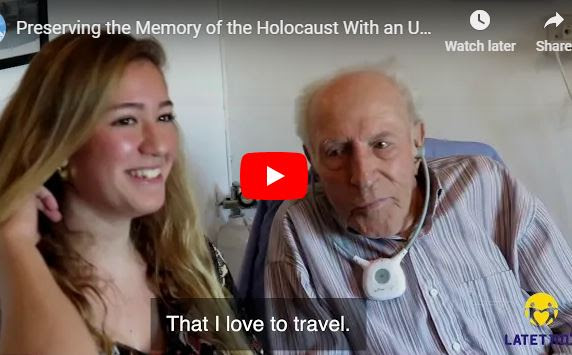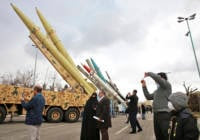| |||||||||||||||||||||||||||||||||||||||||||
| |||||||||||||||||||||||||||||||||||||||||||
|
How a Black Preacher Reared Under Jim Crow Ignited a Worldwide Spirit-Filled Movement
EDDIE HYATT CHARISMA NEWS
God used a Southern black preacher, reared under Jim Crow and with little formal education, to ignite a revival that has reshaped the face of Christianity around the world. The Azusa Street Revival (1906-09) ignited a world-wide movement that Harvard professor, Dr. Harvey Cox, says is still "reshaping religion in the 21st century."
William Joseph Seymour (1870-1922), the leader of the revival, was born to former slaves Simon and Phillis Seymour in Centerville, Louisiana, where they attended the local black Baptist church. William committed his life to Christ at an early age and experience the call of God, even as a youth.
Although little is known of his early life, he would have been reared in the poverty and segregation that was the lot of most blacks in the South at that time.
He Finds His Way to Houston
Get Spirit-filled content delivered right to your inbox! Click here to subscribe to our newsletter.
In 1895, at the age of 25, Seymour moved to Indianapolis, Indiana, where he worked for a time as a waiter in a fashionable restaurant. In 1900, he moved to Cincinnati, Ohio, where he encountered "holiness" teachings through the Church of God (Anderson, Indiana). Seymour embraced this teaching of a second blessing, called sanctification, that would purify the heart and enable one to live a victorious life over sin.
In 1903, Seymour moved to Houston, Texas, where he began attending a black "holiness" church pastored by Lucy Farrow, the niece of Frederick Douglass. When Farrow accepted an invitation to go to Kansas with Charles and Sarah Parham, she turned the congregation over to Seymour, and he became the pastor.
In 1906, Farrow returned to Houston with the Parhams and reconnected with Seymour. She told him of an experience she had while in Kansas called the "baptism in the Holy Spirit," which had been accompanied by speaking in tongues as on the Day of Pentecost in Acts 2:4. Seymour was deeply impacted by her testimony.
After a series of meetings in the city, Parham decided to remain in Houston and open a Bible school in a large house he rented for that purpose. Wanting to learn more about the baptism in the Holy Spirit, Seymour enrolled in the school.
His application created somewhat of a problem because of Southern Jim Crow laws and customs that mandated the segregation of blacks and whites. Parham skirted the local restrictions by arranging for Seymour to sit in an adjoining room where he could listen to the classes through an open door.
Seymour was thus able to hear Parham's teaching of a baptism in the Holy Spirit with the "Bible evidence" of speaking in tongues, and it resonated deeply with him.
Seymour Departs for Los Angeles
While attending classes and continuing to pastor his congregation, Seymour received an invitation to go to Los Angeles and pastor a storefront holiness mission. He sensed God calling him to Los Angeles and departed Houston sometime in February 1906.
Although Seymour had not received the experience Parham preached, he was fully convinced of its veracity and was prepared to preach it without compromise. In his first service at the mission in Los Angeles he, therefore, broached the subject of a third blessing called the baptism in the Holy Spirit evidenced by speaking in tongues.
His audience, however, was not open to this teaching, and when Seymour returned for the evening service, he found the door padlocked. The elders had decided that he was preaching false doctrine and chose to lock him out.
Deep Spiritual Hunger and Prayer Bring Revival
Some of the members had compassion on Seymour, and he was invited to stay in the homes of Edward Lee and then Richard Asberry. Having an intense hunger for the life and power of the Holy Spirit, Seymour gave himself to almost constant prayer. He later said:
Before I met Parham, such a hunger to have more of God was in my heart that I prayed for five hours a day for two and a half years. I got to Los Angeles, and there, the hunger was not less but more. I prayed, "God, what can I do?" The Spirit said, "Pray more." "But Lord, I am praying five hours a day now." I increased my hours of prayer to seven and prayed on for a year and a half more. I prayed to God to give what Parham preached, the real Holy Ghost and fire with tongues with love and power of God like the apostles had (Hyatt, 2000 Years of Charismatic Christianity, 144).
Noticing that their new guest was spending much of his time in prayer, the Asberrys decided to open their home, at 214 Bonnie Brae Street, to evening prayer meetings. When revival erupted in the prayer meeting, the crowds came and soon overflowed onto the porch and lawn.
Realizing that the Asberry home was too small to contain the crowds, Seymour and others began looking for larger facilities for their prayer meeting. They finally located an older dilapidated building at 312 Azusa Street in downtown Los Angeles. This 40-by-60-foot two-story structure had formerly been a Methodist Episcopal Church, but more recently had been used as a stable and warehouse.
The group removed the debris and installed rough plank benches and a makeshift pulpit made from wooden shoeboxes. On April 14, 1906, they held their first meeting in the new facilities and revival fires blazed even more brightly.
Although the prayer meeting was soon organized into a church that they called the Apostolic Faith Mission, prayer continued to be the foremost activity. One participant said, "The whole place was steeped in prayer" (Hyatt, 2000 Years of Charismatic Christianity, 145).
Seymour, the recognized leader, spent much of his time behind the pulpit with his head inside the top shoebox praying. An unpretentious man, he recognized his own need for the continual guidance and strength of the Holy Spirit. A contemporary, John G. Lake, described him as a man of great spiritual power. He wrote,
God had put such a hunger into that man's heart that when the fire of God came it glorified him. I do not believe any other man in modern times had a more wonderful deluge of God in his life than God gave to that dear fellow, and the glory and power of a real Pentecost swept the world. That black man preached to my congregation of ten thousand people when the glory and power of God was upon his spirit, and men shook and trembled and cried to God. God was in him (Hyatt, 2000Years of Charismatic Christianity, 145).
Christ-Centered, Holy Spirit-Empowered Meetings
The services at Azusa were spontaneous. There were no pre-announced events, no special choirs, singers or well-known evangelists. With no platform, everyone was on the same level, and anyone was free to share a testimony or word of exhortation.
Although the building was never empty of people at prayer, the services usually began spontaneously around mid-morning and continued until 3 or 4 the following morning. One participant gave this description of a typical service.
Someone might be speaking. Suddenly the Spirit would fall upon the congregation. God Himself would give the altar call. Men would fall all over the house, like the slain in battle, or rush for the altar enmasse to seek God. Presumptuous men would sometimes come among us. Especially preachers who would try to spread themselves in self-opinionation. But their effort was short lived. Their minds would wander, their brains reel. Things would turn black before their eyes. They could not go on. We simply prayed. The Holy Ghost did the rest (Hyatt, 2000 Years of Charismatic Christianity, 145).
Although dramatic spiritual manifestations captured the attention of the general public, Seymour made a point to keep Christ at the center of the revival. When asked by a certain woman to pray that she might speak in tongues, Seymour kindly exhorted, "Now see here, Sister Sadie, don't you ever go looking for tongues. Seek Jesus for Himself. Seek the Lord. He's the one."
Frank Bartleman, who often gave exhortations at the revival, agreed with Seymour and said, "I endeavored to keep Him [Christ] as the central theme and figure before the people." The January 1907 issue of The Apostolic Faith warned the people not to become preoccupied with the manifestations but to stay focused on Jesus:
We do not have time to preach anything else but Christ. The Holy Spirit has not time to magnify anything but the blood of our Lord Jesus Christ. We are simply a voice shouting, "Behold the Lamb of God!" When we commence shouting something else, then Christ will die in us. If Christ be lifted up, He will draw all men unto Himself.
The Crowds Come to Azusa
As services continued at the Azusa Street Mission, the news spread by word of mouth and religious periodicals that God was doing a unique work there. The Los Angeles Times gave local coverage, that although negative, caught the attention of the local populace. Seymour began a paper called The Apostolic Faiththat soon reached a distribution of 40,000 copies.
News of the revival raised interest everywhere, and soon the faithful and the curious were journeying from far and near to experience the event. They came from across the United States and Canada and from foreign lands.
Missionaries on foreign soil heard of the revival and came. Visitors claimed they could feel a supernatural atmosphere within several blocks of the mission. Multitudes received the Pentecostal experience and went forth with new zeal, fresh vision and a new message of Spirit-empowerment for world evangelism.
Several denominations were swept into the revival as a result of their leaders visiting the revival or by being impacted by someone who had just visited the revival. Future denominational leaders were also impacted by the revival.
C. H. Mason and the Church of God in Christ
Charles H. Mason and the Church of God in Christ were swept into the Pentecostal revival when Mason visited the Azusa Street Mission during the fall of 1906.
Mason spent five weeks in Los Angeles, most of the time at the Azusa Street Mission in prayer seeking the baptism in the Holy Spirit.
One day while sitting prayerfully in the mission, someone said, "Let us sing." Mason stood to his feet and began to sing "He Brought Me Out of the Miry Clay." He later described what happened next:
The Spirit came upon the saints and upon me. Then I gave up for the Lord to have His way within me. So there came a wave of Glory into me and all of my being was filled with the Glory of the Lord. So, when He had gotten me straight on my feet, there came a light which enveloped my entire being above the brightness of the sun. When I opened my mouth to say Glory, a flame touched my tongue which ran down me. My language changed and no word could I speak in my own tongue. Oh! I was filled with the Glory of the Lord. My soul was then satisfied (cogic.org).
Mason returned home to Memphis, Tennessee, where he guided the Church of God in Christ until his death in 1961. The denomination today has over 6.5 million members and over 12,000 congregations, with adherents in every state and over 60 nations.
A Future Assemblies of God Official Impacted at Azusa Street
Another whose life was transformed at the Azusa Street Mission was Ernest S. Williams, who later served as general superintendent of the Assemblies of God (1929-49). He first visited the revival in 1907 and was astounded by what he encountered.
I wish I could describe what I saw. Prayer and worship were everywhere. The altar area was filled with seekers; some were kneeling; others were prone on the floor; some were speaking in tongues. Everyone was doing something; all were seemingly lost in God. I simply stood and looked, for I had never seen anything like it (Hyatt, 2000 Years of Charismatic Christianity, 146).
Interracial Character
The Azusa Street Revival exhibited an amazing racial harmony at a time when America was racially divided by both law and custom. Frank Bartleman, who wrote an eyewitness account of the revival, said, "The color line was washed away in the blood" (Hyatt, 2000 Years of Charismatic Christianity, 147).
The original Azusa board of directors reflected this racial harmony. This board, which governed the affairs of the mission and issued ministerial credentials, consisted of seven women and five men. Five of the women were white and two were black. Of the five men, four were white and one, Pastor Seymour, was black.
Women at Azusa Street
An amazing gender inclusiveness emerged at Azusa Street at a time in America when women could not vote and were excluded by most churches from any viable roles of leadership. Women were a majority on the governing board and a number of powerful women evangelists, pastors and missionaries went forth from the revival.
The January 1908 issue of The Apostolic Faith gave a clear statement of Seymour's view of women in the church:
Before Pentecost, the woman could only go into the "court of the women" and not into the inner court. But when our Lord poured out Pentecost, He brought all those faithful women with the other disciples into the upper room and God baptized them all in the same room and made no difference. All the women received the anointed oil of the Holy Ghost and were able to preach the same as men. They both were co-workers in Eden and both fell into sin; so they both have to come together and work in the Gospel.
The Prophetic Impact of Azusa
The revival on Azusa Street continued unabated for about three years (1906-1909). During this period, it was the key instrument in dispersing Pentecostalism around the world. This occurred not only as a result of the many visitors who came from around the world, but by the numerous missionaries, evangelists and church planters who went out from Azusa.
Seymour continued as pastor of the Azusa Street Mission until his death on Sept. 28, 1922, in Los Angeles. The mission was torn down in 1931, and the property was made into a parking lot.
Seymour and the Azusa Street Revival had, nonetheless, carved for themselves a prominent place in Christian and world history. This was highlighted in 1999 when the prestigious Religion Newswriters Association included the revival in its list of the "Top 10" religious stories of the past millennia.
This list included such momentous events as the medieval Crusades, the 16th- century Protestant Reformation and the publication of the Gutenberg Bible in 1455. Their reason for including the Azusa Street Revival on this illustrious list was that it gave birth to the Pentecostal-Charismatic movement, "Now Christianity's fastest growing branch" (The Dallas Morning News, Saturday, Dec. 4, 1999, 4G).
An Amazing Legacy
Indeed, out of this revival in an old, dilapidated building at 312 Azusa Street in downtown Los Angeles has emerged a movement of spiritual renewal that has impacted all of Christendom. On the international scene, it is estimated that the world-wide constituency of the movement now numbers over 700 million and is growing at the rate of 9 million per year.
What an amazing legacy for an uneducated son of former slaves! William Seymour is a prime example of what God can do through humble hearts that are completely yielded to Him.
Dr. Eddie Hyatt is a church historian and ordained minister who specializes in spiritual awakening in church history. This article is derived from his book,2000 Years of Charismatic Christianity, published by Charisma House and used as a textbook in Bible schools and seminaries around the world. His latest book, The Great Prayer Awakening of 1857-58, is availble from Amazon in both Kindle and paperback. Learn more of his ministry and vision for another Great Awakening at eddiehyatt.com.
Get Spirit-filled content delivered right to your inbox! Click here to subscribe to our newsletter.
Great Resources to help you excel in 2019! #1 John Eckhardt's "Prayers That..." 6-Book Bundle. Prayer helps you overcome anything life throws at you. Get a FREE Bonus with this bundle. #2 Learn to walk in the fullness of your purpose and destiny by living each day with Holy Spirit. Buy a set of Life in the Spirit, get a second set FREE.





































